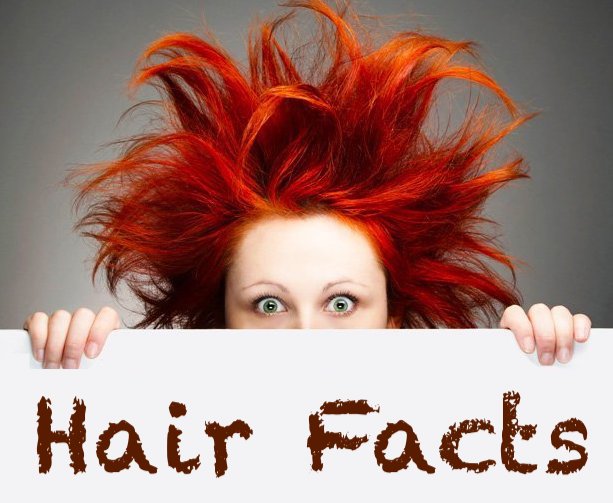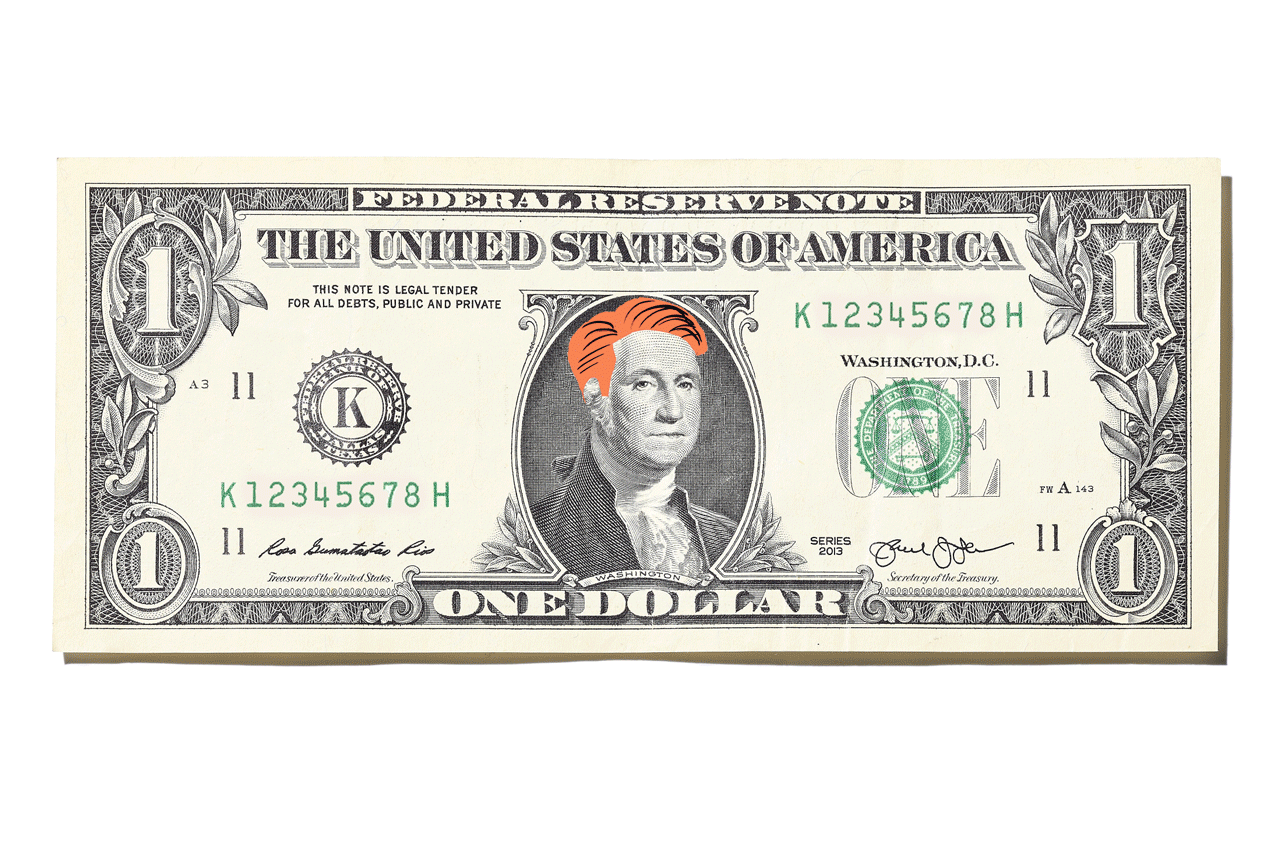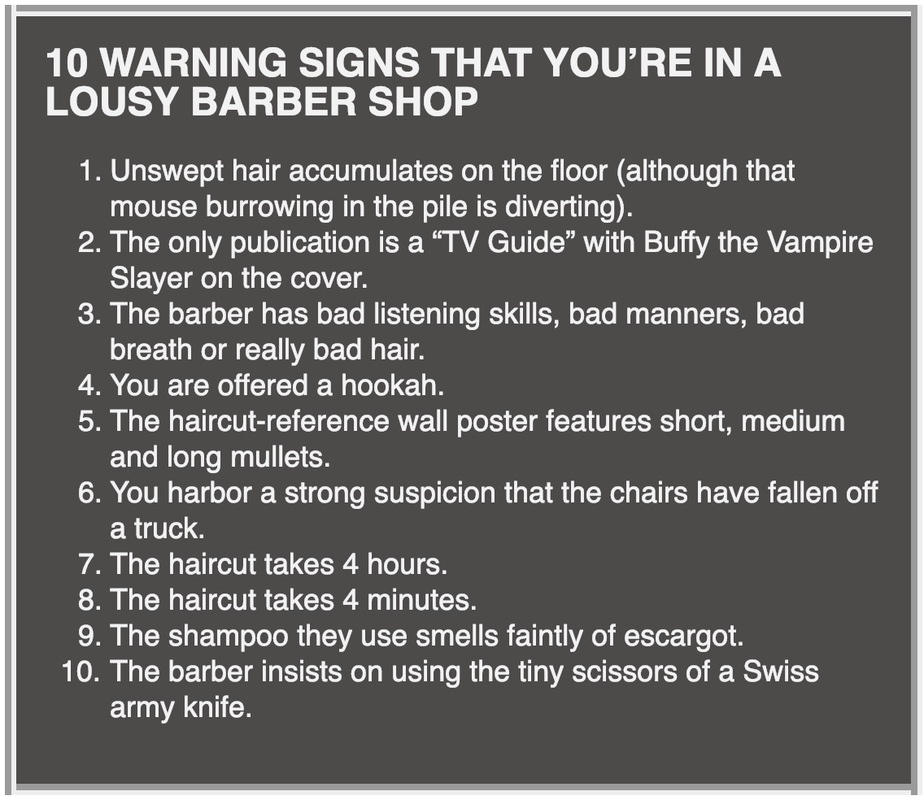|
Your hair is important to you for a couple of reasons. It’s a part of what makes you who you are, but it also holds important information about your health. The appearance of your hair may indicate some underlying health problems — here are 15 things your hair might be trying to tell you.
1. It could signal a thyroid disorder 2. You might have a hormone imbalance 3. You may be too stressed 4. It’s a sign of anemia 5. You may have a mental health disorder 6. You’re spending too much time in the sun 7. You might have a protein deficiency 8. You’re reacting to certain medications 9. You could have an infection 10. It could mean you have Cushing’s syndrome 11. You could have a skin condition 12. You’re consuming too much vitamin A 13. Your diet needs to be switched 14. If your hair is falling out, you may just have poor genetics 15. Your hair color can point to your eye health There's the list. Click here for what your hair might be telling you about your health. Cosmetologists learn everything from the anatomy of a hair follicle, to how to consult with real clients, to picking the right hair color based on client skin tone, and everything in between. That “everything in between” includes tidbits and nuggets of knowledge you may not have known.
Here are just a few:
12/17/2018 0 Comments Your Haircut Is (Probably) Too CheapCertain CEOs won’t spend over $20 and contend that paying more is pointless. But, as barbershops evolve, spending a little extra can make a big difference. Inside the debate over the value of a man’s coiffure ON A NARROW, cobblestoned street in Milan, I got the best haircut of my life. At the halfway point of a two-week work trip, my normally close-cropped hair was creeping over my ears and sprouting into a cowlick. With Google’s help, I found Barberino’s, a throwback shop with a tidy tiled floor, marble counter tops and two bearded, 20-something barbers. The price exceeded what I typically pay—$35 compared with my usual $25 at a Brooklyn barbershop. But, boy, was that haircut good. The young stylist disciplined each errant follicle, cleaved my hair into a precise part and groomed my nape to perfection. Compliments came instantly and continued a week later when I returned to the office in New York. I wondered: Was $10 extra all it took to look that much better? And more generally, what are other men spending on their haircuts these days, and what kind of value do they expect for their outlay? Today, I discovered, men are having vastly different haircutting experiences and paying vastly different amounts of cash. At one extreme is the $14-plus-$4-tip cut that James Santelli, a 26-year-old TV news producer in Pittsburgh, has relied on for nine years. For that $18, he can enjoy a ritual to which many men—along with their fathers and grandfathers—remain loyal: a serviceable haircut in a bare-bones shop care of a barber who can yak about last night’s hockey game. On the other end of the spectrum is a salon-style treatment (shampooing, snipping, styling, prolonged fine-tuning) like the one offered by stylist Mackenzey Forrey for $125 at Bumble and Bumble salon in New York. “If you are looking for a more edgy style that’s not just shaved sides and short on the top, something that actually has texture and blends well from the sides to the top, then that’s coming to a salon,” said Ms. Forrey. She’s trained in traditional barbershop techniques, but also prides herself on analyzing face and head shape to find the best style. Though they may look the same, not all men’s haircuts are created equal. Expert barber Jeremy Pelser shows what sets the quality cuts apart.
It seems most guys fall squarely on the lower-to-middle end of this scale, if an unscientific Twitter survey I posted earlier this month is any indication. Of the 314 of my followers who responded, nearly 75% paid $40 or less. And of the 23 men I buttonholed in Midtown Manhattan a week later, 15 routinely paid in the $20 range.
The middle ground between the basic barber and the fastidious salon has grown more populated over the last decade thanks to a wave of neo-retro barber shops that offer relatively brisk pampering and beard finessing. Beginning with the openings of Freemans Sporting Club (F.S.C.) Barber and Blind Barber in New York City in 2006 and 2010, respectively, a new standard has emerged with cuts running around $40. When it comes to prevailing attitudes, explained Blind Barber coiffeur Jeremy Pelser, “there’s still a separation...the salon is for women and the barbershop is for men.” Shops like his help put men at ease with a masculine atmosphere—subway-tiled walls and winkily antique mirrors that allude to more dapper times (and an optional beer to sweeten the deal). They often hire bearded, tattooed barbers trained in nuanced techniques who’ll use a straight razor to shape your hairline or feather your hair so it grows in evenly. Barber Ruben Aronov first went to F.S.C. in its early days, fleeing a 71-year-old, 70-seat, walk-in barbershop which he described as a “chop shop” with “no finesse because you had no time, you had to do more haircuts quickly to make more money.” He found that F.S.C., with its longer appointment windows and correspondingly higher prices, encouraged a better cutter-client interaction. Today, these barbershops (as well as variations catering to LGBTQ clients, and others that specialize in curly or long hair) have mushroomed in popularity in many American cities. “It’s kind of a throwback to the real barbershop era but with a modern, hip edge to it,” said Stan Perry, a 53-year-old lawyer in Houston. Mr. Perry pays $35 plus tip to get his hair cut by one of the “inked-up” barbers at Cutthroat Barbershop, where they do a better job than the no-frills $20 chain he used to go to, he claimed, taking time to focus on finer points like shaving the back of his neck. Yet, among the dozens of men that I spoke with about their hair, many expressed an apathy or uncertainty about how they looked. As Chris Polychronides, 35, a system engineer in New York, replied when I asked if he liked his haircut, “Enough. Is it bad?” Though men’s hair styles tend to be less complicated than women’s hairdos, there are ways to tell if your barber is up to snuff. Price matters, but the relationship matters more: A $20 haircut can trump a $40 cut if your barber really knows you and gets your hair. “I’m half-black, half-white, so I have difficult hair to cut and style,” said Austin Mallot, a 26-year-old personal stylist in San Diego. Mr. Mallot found that neither mainstream salons nor barbers who worked with black hair met his needs, but he ended up finding a good fit at an old-school barbershop. “He just knows what he’s doing, and I trust him,” he said. Trust can take time, but a good barber should be able to “get a feel for what you will and won’t do” style-wise right away, explained F.S.C. veteran Mr. Aronov, who recently opened his own shop, MOI, in downtown New York. They should ask questions and guide you properly; if you’re wearing a suit, a bohemian man bun should probably be discouraged. It helps if the barber is flat-out nice. Josh Archer, 40, an English teacher in Knoxville, Tenn., has been paying the same barber about $27 for 10 years and in that time the two have become friends. When Mr. Archer’s two children were born, his barber even visited at the hospital. The shop itself should be a place you’re comfortable patronizing for years to come. If there’s a mangy cat prowling around or the barbicide looks putrid, get out of there. And if that hip barber spends more time gazing at himself in the mirror than at your part, that should be a red flag as well. Jason Stewart, a 37-year-old DJ in Los Angeles, recently tired of the twee spot he’d been going to, with its period Edison lights and chalkboard sign-in sheet, because the self-consciously retro vibe got to be “too much.” Now, Mr. Stewart pays $30 at Vinny’s, a lower-key outfit. He said that a barbershop should be an “oasis for the modern man.” A place where he can get pampered, have a chat and escape the world for 40 minutes. And so, after my experience in Milan (and, candidly, the compliments that ensued) I’m searching for my own oasis and a better haircut. For that, I might even pay $10 more. Marilyn Monroe may be an iconic blonde, but she certainly wasn't the first to make us adore this hair color. Back in the (seriously) olden days, women used to try to bleach their locks with everything from horse urine to pigeon dung. (We don't recommend you try that at home.) And still today, there are so many influential blondes that we see all the time in the media, such as Blake Lively, Jessica Simpson, and Anna Faris.
Whether you come by your blonde hair "legally" or make that faithful appointment with your stylist every six to eight weeks, here's what you need to know about this preternaturally playful hair color. 1. Being naturally blonde is pretty rare. Only 2 percent of people in the world are natural blondes. (About one in 20 Americans are.) But that doesn't mean it's not popular. One in three women dyes her locks light enough to be considered blonde. 2. Blonde hair comes from a teeny-tiny genetic mutation. How tiny? Think one letter change among 3 billion letters that make up a person's DNA. 3. Blondes aren't blondes forever. (Naturally, at least.) Many kids born with light hair go dark before their tenth birthday, thanks to rising levels of eumelanin, a natural pigment that regulates the darkness of hair strands. 4. Having blonde hair doesn't necessarily mean having blue eyes. It's a stereotype. Although red hair, light eyes, and light skin do tend to go together, blondies can have eyes that are blue, green, brown, and more. 5. There are 50 shades of gray ... and 30 shades of blonde. Yep, there are really that many hair hues that can be considered blonde. For instance, Taylor Swift has café au lait locks; Gwen Stefani's are golden platinum; and Cara Delevingne rocks a gray-blonde. (Beyonce's a "brownde" -- a brownish-blonde -- just FYI.) 6. Blond-haired, blue-eyed men are blonde women's biggest fans. The reason has roots in evolutionary psychology. Both blonde hair and blue eyes are recessive traits, so both parents must carry the gene for blonde hair to pass it on to their kids. Some scientists think men with light hair and eyes are instinctively drawn to women with the same coloring. That way, he'll know for sure he's the dad of any offspring. 7. Blondes not only have more fun -- they have MORE hair. Most people have about 120,000 hairs on their head, but people with light-colored locks tend to have even more. The reason? Blonde hair is finer than other colors, so the scalp can hold more individual strands. 8. Many gentlemen (probably do) prefer blondes. Several published studies have found that men find blondes more attractive than women with other hair colors. Blonde women are most likely to be picked up in a bar. Heck, they're also more likely to be helped by a man when they drop something on a sidewalk. 9. But there's a dark side to men's attraction, too. Research published in the Scandinavian Journal of Psychology found that men tend to think blondes are usually needy, high-maintenance, and neurotic. (So, stop trying to pick us up in bars already then!) 10. Forget "dumb blonde" -- blondes make men act dumb. Although, not for the reasons you might think. When French men were shown pics of blonde women, and then were given a general knowledge test, they scored worse on it than when they looked at images of dark-haired women. The reason? Researchers say the stereotype of "dumb blonde" is so ingrained that men were simply behaving in kind. Oookay, or maybe they're just dumbfounded by our beauty! 11. But blondes get the last laugh! Researchers at the University of Queensland found that not only are blonde women paid more than their peers with other hair colors, but they're also more likely to marry a wealthier man. This article first appeared on cafemom |
Hair by BrianMy name is Brian and I help people confidently take on the world. CategoriesAll Advice Announcement Awards Balayage Barbering Beach Waves Beauty News Book Now Brazilian Treatment Clients Cool Facts COVID 19 Health COVID 19 Update Curlies EGift Card Films Follically Challenged Gossip Grooming Hair Care Haircolor Haircut Hair Facts Hair History Hair Loss Hair Styling Hair Tips Hair Tools Health Health And Safety Healthy Hair Highlights Holidays Humor Mens Hair Men's Long Hair Newsletter Ombre Policies Procedures Press Release Previous Blog Privacy Policy Product Knowledge Product Reviews Promotions Read Your Labels Recommendations Reviews Scalp Health Science Services Smoothing Treatments Social Media Summer Hair Tips Textured Hair Thinning Hair Travel Tips Trending Wellness Womens Hair Archives
June 2025
|
|
Hey...
Your Mom Called! Book today! |
Sunday: 11am-5pm
Monday: 11am-6pm Tuesday: 10am - 6pm Wednesday: 10am - 6pm Thursday: By Appointment Friday: By Appointment Saturday: By Appointment |







 RSS Feed
RSS Feed